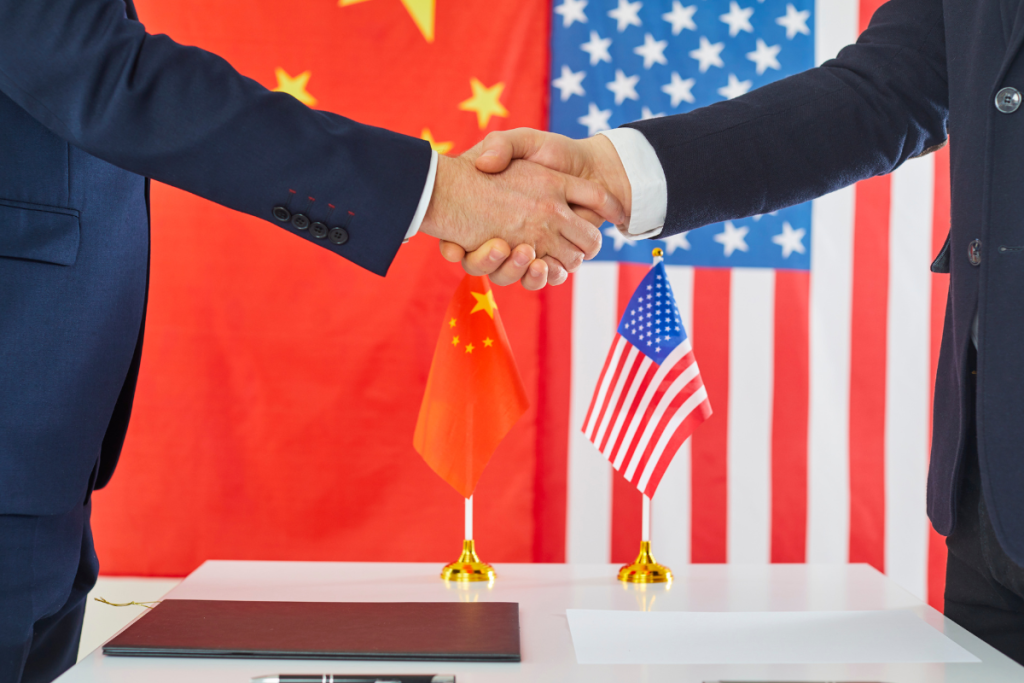After months of escalating tariffs and collapsing trans-Pacific volumes, the U.S. and China have agreed in Geneva to a 90-day reduction in reciprocal duties. Under the agreement, U.S. duties on Chinese imports will drop from 145% to 30%, while China will lower its tariffs on American goods from 125% to 10%. The revised rates will take effect on May 14. While the move eases immediate pressure on global markets and logistics flows, supply chain leaders remain focused on long-term diversification and operational resilience.
Tariff Reprieve Brings Temporary Relief
The weekend’s closed-door Geneva talks between the U.S. Treasury Secretary Scott Bessent, Trade Representative Jamieson Greer, and Chinese Vice Premier He Lifeng resulted in a surprise breakthrough in tariffs that had previously reached punitive levels. While penalties on fentanyl-related categories remain, broader tariffs on industrial goods, electronics, and machinery will ease for 90 days.
At face value, it’s a notable de-escalation. Global markets welcomed the development, with Dow futures rising more than 2%, the S&P 500 climbing nearly 3%, and the Nasdaq Composite gaining over 3.5% in Asian trading. Hong Kong’s Hang Seng index advanced more than 3%, and the Chinese yuan strengthened against the U.S. dollar.
Yet while investor sentiment has improved, supply chain leaders are adopting a more cautious stance. The rollback may offer short-term relief on landed costs and import duties, but it does not alter the strategic direction many firms have already taken.
Trade Complexity Demands Embedded Capabilities
Recent disruptions, from blank sailings to rerouted shipments and warehouse backlogs, have exposed the fragility of overdependence on any single sourcing market. In response, many supply chain leaders have accelerated dual-sourcing strategies, diversifying supply lines toward Vietnam, India, and Mexico. The Geneva tariff rollback may ease short-term pressure on landed costs, but it does not alter the strategic rationale behind this diversification. If anything, it reinforces the need to maintain sourcing flexibility, balance exposure across regions, and build redundancy into manufacturing and logistics networks.
Sectors such as semiconductors, pharmaceuticals, and clean energy remain subject to persistent tariffs, export controls, and regulatory shifts. These are not temporary frictions but embedded features of the global trade environment. For supply chain leaders, this complexity requires embedded trade governance.
Customs strategy, tariff planning, and digital monitoring tools must be fully integrated into sourcing and fulfillment workflows—not just to control costs, but to enable timely and informed decisions under shifting policy conditions. Teams equipped with proactive trade intelligence can better model sourcing decisions, hedge supply risk, and ensure continuity in high-regulation markets.
A Constructive Pause in a Prolonged Realignment
The tariff rollback offers a temporary easing of pressure, but it does not mark a return to predictable trade conditions. The operational shifts prompted by years of trade tension, supplier diversification, nearshoring, and digital risk monitoring, are not easily reversed, nor should they be. If anything, this moment underscores the value of long-term preparedness over reactive responses to policy signals.
For supply chain leaders, the priority now is not to react to individual signals but to build systems that can absorb and adapt to continuous change. The more sustainable path forward lies in institutionalizing flexibility, investing in intelligence-driven trade governance, and reinforcing operational models that can withstand external shocks—regardless of policy cycles.




